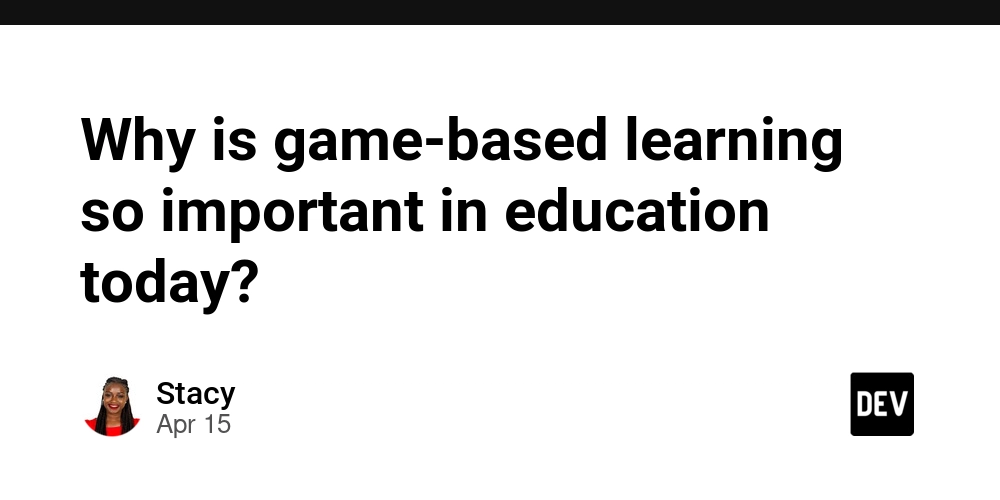Why is game-based learning so important in education today?
Introduction Education is changing rapidly in today’s connected world. Innovative methods like game-based learning (GBL) are transforming how we learn. GBL uses both digital and traditional games to make learning fun, interactive, and effective. For example, students learning Spanish online can use games to practice new language skills in a more engaging way Playing games has long been a universal pastime, enjoyed by people of all ages and backgrounds. People now recognize what was once merely entertainment as a powerful educational tool. Educators are increasingly including games into language learning, including Spanish. Some games boost reasoning and memory, while others help with age-related issues like short-term memory loss Games reveal how our brains learn and remember, making learning enjoyable and effective. Game-based learning works well for subjects like math, science, and languages.Comligo offers courses that can help you learn Spanish. Their courses show how digital and traditional games can make learning more enjoyable. Game-based learning not only enriches the teaching process but also creates a more engaging environment for students. By adding games to the curriculum, teachers can reach different groups of students. Each student has their own personality, skills, and way of learning. Learning Spanish While Having Fun Many people think learning Spanish must be strict and formal, which makes it feel hard and not fun. Also, technology is growing fast, which can make game-based learning seem unhelpful. However, games are more than just digital formats as offer a fun and creative way to learn Spanish online. When traditional Spanish learning methods become boring, students struggle to remember what they learn. Game-based learning solves this by engaging students, making the process fun and memorable. The immersive nature of games helps learners remember skills longer and apply them in real-life situations. Three Approaches to Including Games in the Spanish Learning Process Several ways to integrate games into the Spanish learning experience effectively: Learner-Created Games: Students design their own games tailored to their specific Spanish language learning needs. This creative process enhances understanding and allows them to focus on areas where they need improvement. Educator-Designed Games: Teachers, trainers, and developers create educational games aligned with students’ Spanish proficiency levels. These games carefully challenge and support learners as they progress. Commercial Ready-to-Use Games: Teachers integrate commercially available games into classroom activities. These pre-designed games simplify lesson planning while ensuring effective Spanish learning outcomes. Collective Potential and Collaboration Unlike traditional learning methods, game-based learning emphasizes communication, collaboration, and teamwork. These elements are particularly beneficial for Spanish language learners, as they encourage active engagement and interaction. Working together in games helps students improve not only their Spanish skills but also their social abilities. This promotes learners ideas, exchange insights, and work towards common goals — skills that are valuable both in and out of the classroom. Immediate Feedback One of the standout benefits of game-based learning is the immediate feedback it provides. Students no longer have to wait for test or assignment grades to understand their progress. Instead, games offer real-time results, helping learners identify strengths and areas for improvement. For teachers, this instant feedback is equally valuable. By observing how students interact with the game, educators gain insights into their engagement levels and comprehension. This allows for quick adjustments to teaching strategies, ensuring every student stays on track. Additionally, games create a low-pressure environment where students can learn without the fear of making mistakes. This safe space encourages experimentation and builds confidence, enabling learners to master Spanish at their own pace. Strategic Thinking and Problem-Solving Game based learning enables students to think strategically and explore different possibilities without the fear of failure. By integrating thought and action, games help learners develop problem-solving skills and adopt a growth mindset. These traits are essential for achieving language proficiency. For example, a game might require students to use specific Spanish words to navigate a challenge. As they strategize and adapt, they reinforce their knowledge and learn to apply it in new contexts. This process not only improves their Spanish skills but also enhances cognitive abilities like critical thinking and decision-making. Strategic Games Improve Brain Function Games enhance key cognitive processes such as repetition, reinforcement, retention, and knowledge transfer. Each game targets a specific learning goal, offering unique o

Introduction
Education is changing rapidly in today’s connected world. Innovative methods like game-based learning (GBL) are transforming how we learn. GBL uses both digital and traditional games to make learning fun, interactive, and effective. For example, students learning Spanish online can use games to practice new language skills in a more engaging way
Playing games has long been a universal pastime, enjoyed by people of all ages and backgrounds. People now recognize what was once merely entertainment as a powerful educational tool. Educators are increasingly including games into language learning, including Spanish. Some games boost reasoning and memory, while others help with age-related issues like short-term memory loss
Games reveal how our brains learn and remember, making learning enjoyable and effective. Game-based learning works well for subjects like math, science, and languages.Comligo offers courses that can help you learn Spanish. Their courses show how digital and traditional games can make learning more enjoyable.
Game-based learning not only enriches the teaching process but also creates a more engaging environment for students. By adding games to the curriculum, teachers can reach different groups of students. Each student has their own personality, skills, and way of learning.
Learning Spanish While Having Fun
Many people think learning Spanish must be strict and formal, which makes it feel hard and not fun. Also, technology is growing fast, which can make game-based learning seem unhelpful. However, games are more than just digital formats as offer a fun and creative way to learn Spanish online.
When traditional Spanish learning methods become boring, students struggle to remember what they learn. Game-based learning solves this by engaging students, making the process fun and memorable. The immersive nature of games helps learners remember skills longer and apply them in real-life situations.
Three Approaches to Including Games in the Spanish Learning Process
Several ways to integrate games into the Spanish learning experience effectively:
- Learner-Created Games:
Students design their own games tailored to their specific Spanish language learning needs. This creative process enhances understanding and allows them to focus on areas where they need improvement.
- Educator-Designed Games:
Teachers, trainers, and developers create educational games aligned with students’ Spanish proficiency levels. These games carefully challenge and support learners as they progress.
- Commercial Ready-to-Use Games:
Teachers integrate commercially available games into classroom activities. These pre-designed games simplify lesson planning while ensuring effective Spanish learning outcomes.
Collective Potential and Collaboration
Unlike traditional learning methods, game-based learning emphasizes communication, collaboration, and teamwork. These elements are particularly beneficial for Spanish language learners, as they encourage active engagement and interaction. Working together in games helps students improve not only their Spanish skills but also their social abilities. This promotes learners ideas, exchange insights, and work towards common goals — skills that are valuable both in and out of the classroom.
Immediate Feedback
One of the standout benefits of game-based learning is the immediate feedback it provides. Students no longer have to wait for test or assignment grades to understand their progress. Instead, games offer real-time results, helping learners identify strengths and areas for improvement.
For teachers, this instant feedback is equally valuable. By observing how students interact with the game, educators gain insights into their engagement levels and comprehension. This allows for quick adjustments to teaching strategies, ensuring every student stays on track.
Additionally, games create a low-pressure environment where students can learn without the fear of making mistakes. This safe space encourages experimentation and builds confidence, enabling learners to master Spanish at their own pace.
Strategic Thinking and Problem-Solving
Game based learning enables students to think strategically and explore different possibilities without the fear of failure. By integrating thought and action, games help learners develop problem-solving skills and adopt a growth mindset. These traits are essential for achieving language proficiency.
For example, a game might require students to use specific Spanish words to navigate a challenge. As they strategize and adapt, they reinforce their knowledge and learn to apply it in new contexts. This process not only improves their Spanish skills but also enhances cognitive abilities like critical thinking and decision-making.
Strategic Games Improve Brain Function
Games enhance key cognitive processes such as repetition, reinforcement, retention, and knowledge transfer. Each game targets a specific learning goal, offering unique opportunities for engagement. While students work through the same concepts, their individual approaches to problem-solving can inspire others.
This collaborative aspect of games highlights the importance of shared learning. Students can observe and adopt effective strategies from their peers, broadening their understanding of Spanish. Ultimately, learners take ownership of their progress, which makes the process both enjoyable and rewarding.
The Role of Learning Objectives in Games
A well-designed educational game revolves around a clear learning objective. These objectives guide the game’s format, required skills, and content. For instance, games that test memory through recall exercises can significantly improve students’ ability to retain and retrieve information.
When students succeed in a game, they reinforce their knowledge, boosting their confidence and motivation. Conversely, they correct mistakes through immediate feedback, ensuring they understand and learn from their errors. This balance of positive reinforcement and constructive correction creates a powerful learning experience.
Motivation Through Enjoyment
One of the greatest strengths of game-based learning is its ability to motivate students. When learners genuinely enjoy a game, they are more likely to engage with it regularly, even in their free time. This enjoyable competition becomes a tool for consistent practice, leading to better language skills over time.
For example, a student who loves playing a vocabulary-building game may find themselves revisiting it repeatedly. This repetition reinforces their understanding of Spanish words and phrases, turning a casual activity into a valuable learning opportunity.
The Future of Game-Based Learning
As game-based learning continues to gain traction, its potential to transform education becomes increasingly clear. By making learning interactive, enjoyable, and effective, games offer a unique approach that resonates with students of all ages. In the context of language learning, such as Spanish, this method provides a dynamic way to build skills and confidence.
With tools like Comligo’s Spanish courses, learners can experience the benefits of game-based learning firsthand. These courses offer a comprehensive solution for mastering Spanish in a fun and engaging way.
Game-based learning suits different learning styles, making it a great tool for both teachers and students making Spanish fun and engaging.




























![[Webinar] AI Is Already Inside Your SaaS Stack — Learn How to Prevent the Next Silent Breach](https://blogger.googleusercontent.com/img/b/R29vZ2xl/AVvXsEiOWn65wd33dg2uO99NrtKbpYLfcepwOLidQDMls0HXKlA91k6HURluRA4WXgJRAZldEe1VReMQZyyYt1PgnoAn5JPpILsWlXIzmrBSs_TBoyPwO7hZrWouBg2-O3mdeoeSGY-l9_bsZB7vbpKjTSvG93zNytjxgTaMPqo9iq9Z5pGa05CJOs9uXpwHFT4/s1600/ai-cyber.jpg?#)














































































































































![[The AI Show Episode 144]: ChatGPT’s New Memory, Shopify CEO’s Leaked “AI First” Memo, Google Cloud Next Releases, o3 and o4-mini Coming Soon & Llama 4’s Rocky Launch](https://www.marketingaiinstitute.com/hubfs/ep%20144%20cover.png)





































































































































































































![Rogue Company Elite tier list of best characters [April 2025]](https://media.pocketgamer.com/artwork/na-33136-1657102075/rogue-company-ios-android-tier-cover.jpg?#)







































































_Andreas_Prott_Alamy.jpg?width=1280&auto=webp&quality=80&disable=upscale#)





































































































![Apple Watch Series 10 Back On Sale for $299! [Lowest Price Ever]](https://www.iclarified.com/images/news/96657/96657/96657-640.jpg)
![EU Postpones Apple App Store Fines Amid Tariff Negotiations [Report]](https://www.iclarified.com/images/news/97068/97068/97068-640.jpg)
![Apple Slips to Fifth in China's Smartphone Market with 9% Decline [Report]](https://www.iclarified.com/images/news/97065/97065/97065-640.jpg)



































































































































